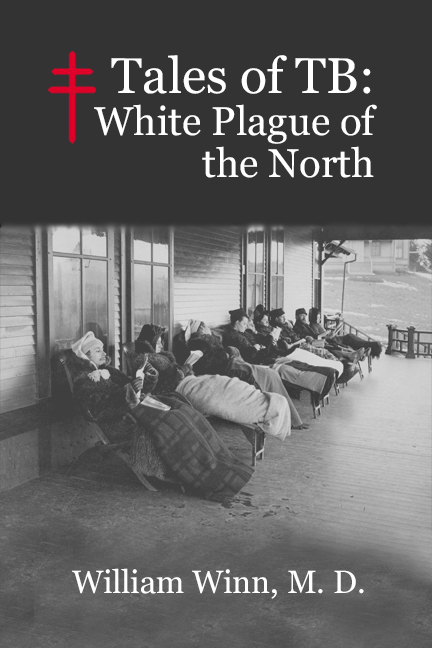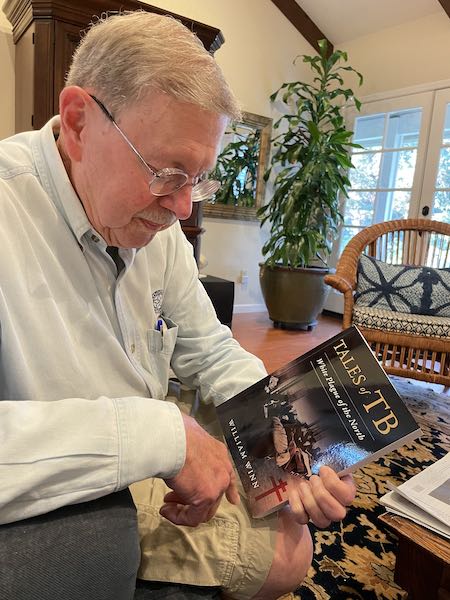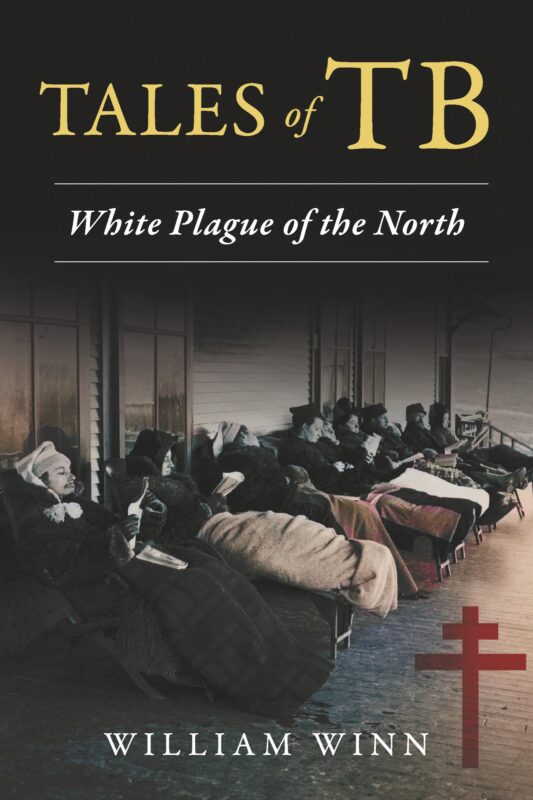In 2017, I met Bill, who came to me for some illustrations for a book he was writing on the old tuberculosis hospital in Springville, which is in the southern part of Tulare County (above Porterville).
This is a topic that really interests me. I’ve been curious about that place since I first saw it on the way to Scicon* for a day trip as a 5th grader.
You may recall that helping local authors get books published is a sideline of mine**—I edit, proofread, photo-edit, format, do a little cover design (but not much because all my covers look alike), and get books to a printer. (Most are out of print because they are very short runs for limited audiences).

Bill hired me to draw three pictures and then to be his editor, or more accurately, his book shepherd. He loves research more than any other book task, and the scope of the book continued to expand until we realized that he was no longer writing about Springville. The subject became tuberculosis, as it was documented by writers, poets, and other well-known literary (and literate) folks through the years when it was a disease that was feared, and not understood.
TALES OF TB: WHITE PLAGUE OF THE NORTH
Seven years of research, learning, writing, rewriting, finding photos, fighting computers, working together and becoming friends have finally culminated in the book, which Bill received a few bound copies of last week.

Bill chose to have the printer, BookBaby, handle the distribution, which they will eventually do through Amazon and Barnes & Noble. Until it gets up on those giant sites, you may order directly through BookBaby by clicking on this link: Tales of TB: White Plague of the North. (You might be able to order from BookBaby after it is up on those giant sites. This is a new experience for me, because most my previous authors have sold their books themselves.)

Here is the official description:
Though all but forgotten in affluent regions, tuberculosis is an ancient pandemic that presently kills 1.5 million people yearly. It was rampant in the England of 1800 and accepted that 1% of the population succumbed each year to the wasting disease—consumption—a grim reaper that would one day be known as tuberculosis, or more dramatically, “The White Plague.” Seven well-known people of a not-so-distant past left detailed accounts of their tuberculous lives—in their various letters, essays, poems, and biographies. Their surnames are Barrett-Moulton, Keats, Bronte, Poe, Browning, Trudeau, and Stevenson. Although it was most often a disease of poverty, no one was safe from the White Plague. The stories of these talented writers, poets, and their doctors are explored here and portray the variations of the disease and the personalities of its victims. Beginning with the subject in the well-loved painting “Pinkie” by Thomas Lawrence in 1794 through Robert Louis Stevenson of Treasure Island fame, the book moves into the sanatorium era of the late 1800s and first half of the 20th century. In 1950, medical science came up with several semi-miraculous medications that amazingly cured the worst types of tuberculosis. However, the White Plague has soldiered on, and there have been unexpected happenings that play a role in maintaining mortality: (1) the human immunodeficiency virus (HIV) (2) drug resistant tuberculosis (3) the Covid-19 pandemic, which has severely damaged tuberculosis control and reduced access to medication in the less privileged regions of the world. Will tuberculosis always be with us as a “forever” pandemic?
Currently I am working on two new books for 2 other authors, and still eagerly waiting for the book on the Springville TB Hospital to get written. (Yes, I am still painting, drawing, and teaching drawing lessons!)
*Clemmie Gill School of Science and Conservation, where 5th graders go for a day, 6th graders go for a week, and high school juniors and seniors can go as a counselor. Maybe. That’s the way it was in the 1970s.
**I am able to do this because I learned how while working on the Cabins of Wilsonia.
2 Comments
Thanks for the link to Books Baby (or was it Baby Books) for Bill Winn’s TB book. We’ve been friends for a long time, both through the medical community and the fly-fishing community. I’m so glad he got this into print! And delighted that you worked with him!
Donna, it doesn’t surprise me that you know Bill because sometimes I think you know EVERYONE around here! The printing company is called BookBaby, not that it matters. So glad to connect you to the book!
Comments are closed for this article!